Figures & data
Figure 1. A Kilombe handaxe with all morphological measurements highlighted (the specimen GqJh1 EH368 made of trachyte has the characteristic tip thinning mentioned in text).

Table 1. Measurement definitions for each piece of morphological information recorded from the Kilombe and replica handaxes.
Table 2. Descriptive data for the 16 variables considered in this paper, for both the handaxe artefacts from Kilombe, and the modern replica tools.
Figure 2. Boxplots comparing weight (g), length (mm), thickness (mm), breadth (mm) and PMB (mm) between the Kilombe and modern handaxes.
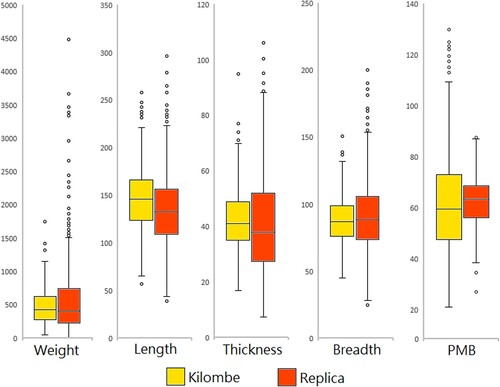
Table 3. Comparison on CV values from selected sites, for the 11 variables and 5 ratios examined here. Artefact samples vary in number dependent on the field season that data were collected, or the number examined during different British Museum visits (Boxgrove).
Table 4. Flinger-Kileen tests of equal coefficient of variation between the Kilombe handaxe artefacts and the replicated modern tools. Tests were run for all 16 variables and indices used in this paper (α = .05).
Figure 3. Scatterplots of Length, Breadth and Thickness for the two assemblages. The fitted lines (Reduced major axes) in the Replica series pass through or very close to the geometric origin. The Kilombe series show allometry, with a rotation of the line especially clear for Length and Breadth. Both series show densely populated ovoids in the distributions, with a thinner and more dispersed scatter of points at the large end of the spectrum, especially evident in the Replica set.
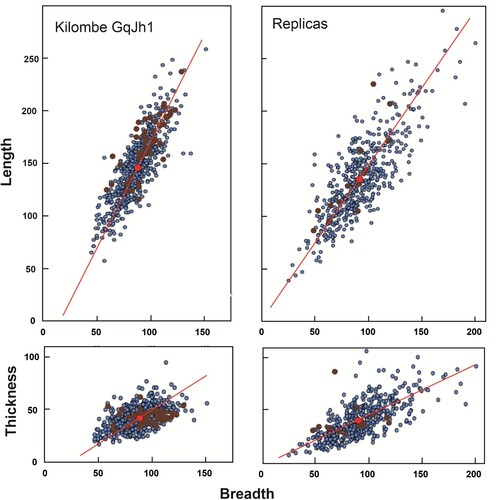
Figure 4. Scatter plots of TA (tip thickness) and breadth for the two datasets. The two plots are essentially similar, with tighter grouping than in the Thickness/Breadth plots (). This suggests that in both cases the maker or makers were targeting thin tips in a consistent way, except for a few specimens where a thicker tip may have been created intentionally.
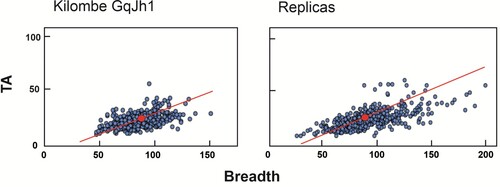
Table 5. Strength of slope for log transformed ‘thickness at 0.8 from butt’ data (i.e. tip-thinness) against five log transformed measures of tool size data.
Figure 5. Differences in points of maximum breadth in the replicas (subset; n = 30) and Kilombe GJh1 E (n = 108). The measure is the difference between the points of maximum breadth (PMB) on the two sides of the handaxe, as a percentage of overall length.
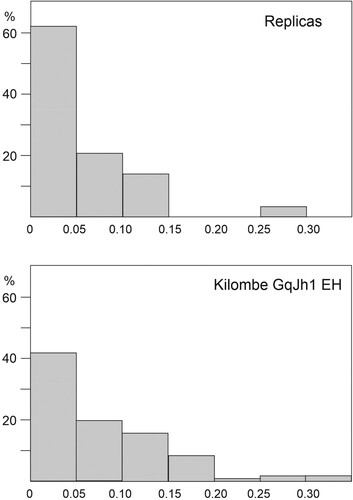
Figure 6. Histogram of handaxe length for Kilombe (blue) and the replica tools (red). A longer (skewness) and heavier (kurtosis) tail to the right can clearly be observed in the modern handaxe assemblage.
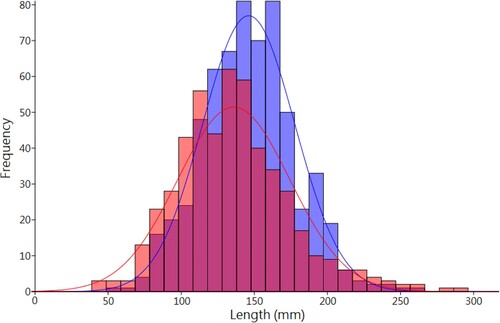
Figure 7. Visualisation of the correlation matrix for Kilombe (left) and modern (right) handaxe variables. Strength of colour and size depict correlation strength. Brighter (more yellow) colouration, along with greater size, indicates a stronger positive correlation.
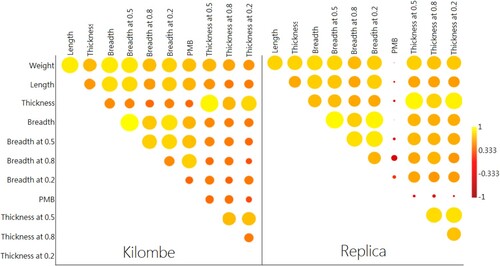
Table 6. Correlation matrixes for the 11 main variables recorded, displayed such that strength of correlation can be compared between the Kilombe and modern tools. In almost every instance, Pearson correlation coefficient tests identified significant positive correlations where p = <.0001. Non-significant correlations were returned between replica PMB and weight, length and breadth. The modern tool set displays a greater number of stronger correlations (gray). Kilombe displayed stronger correlations between PMB and all measures, reflecting the near-random distribution of PMB in the replica tools.
